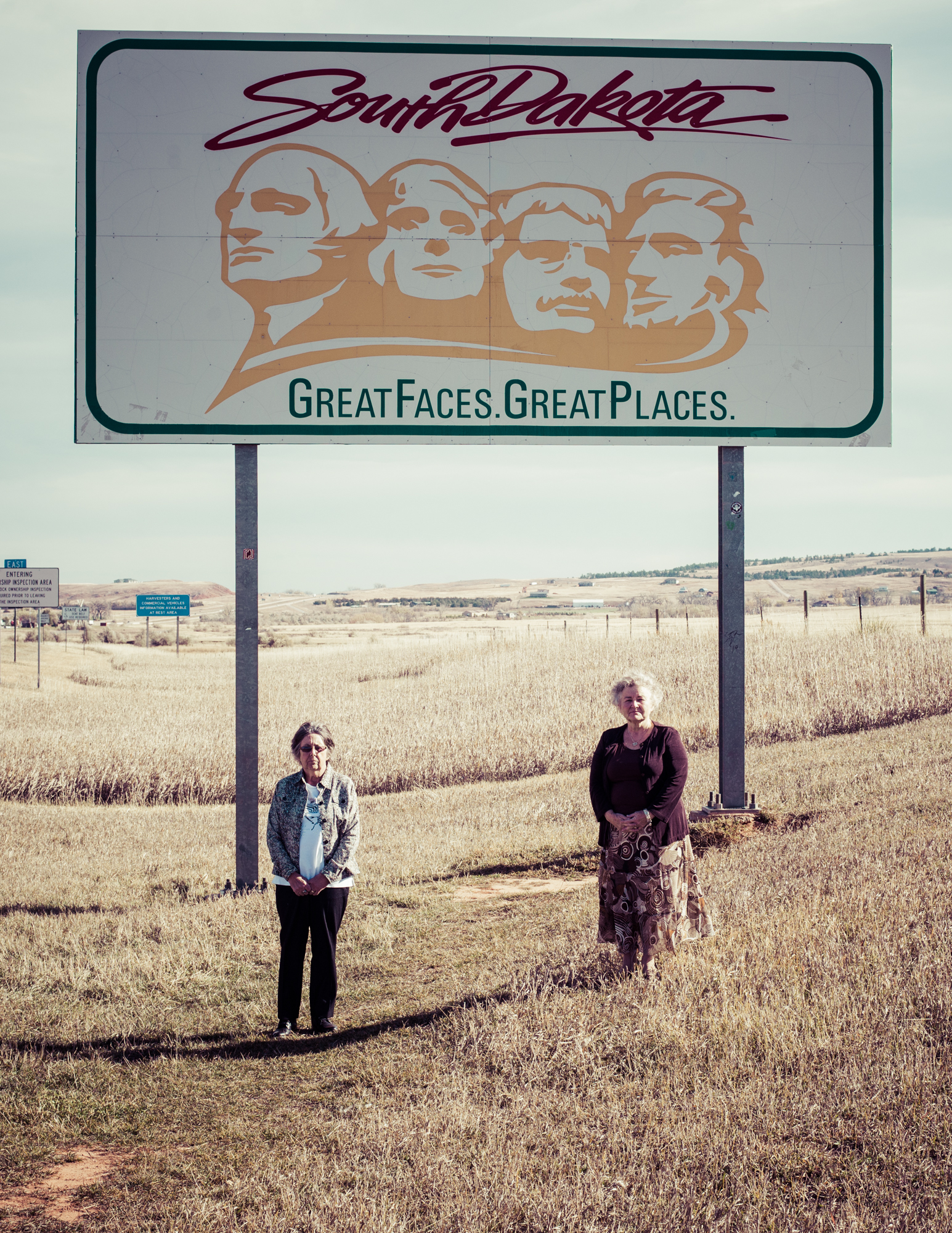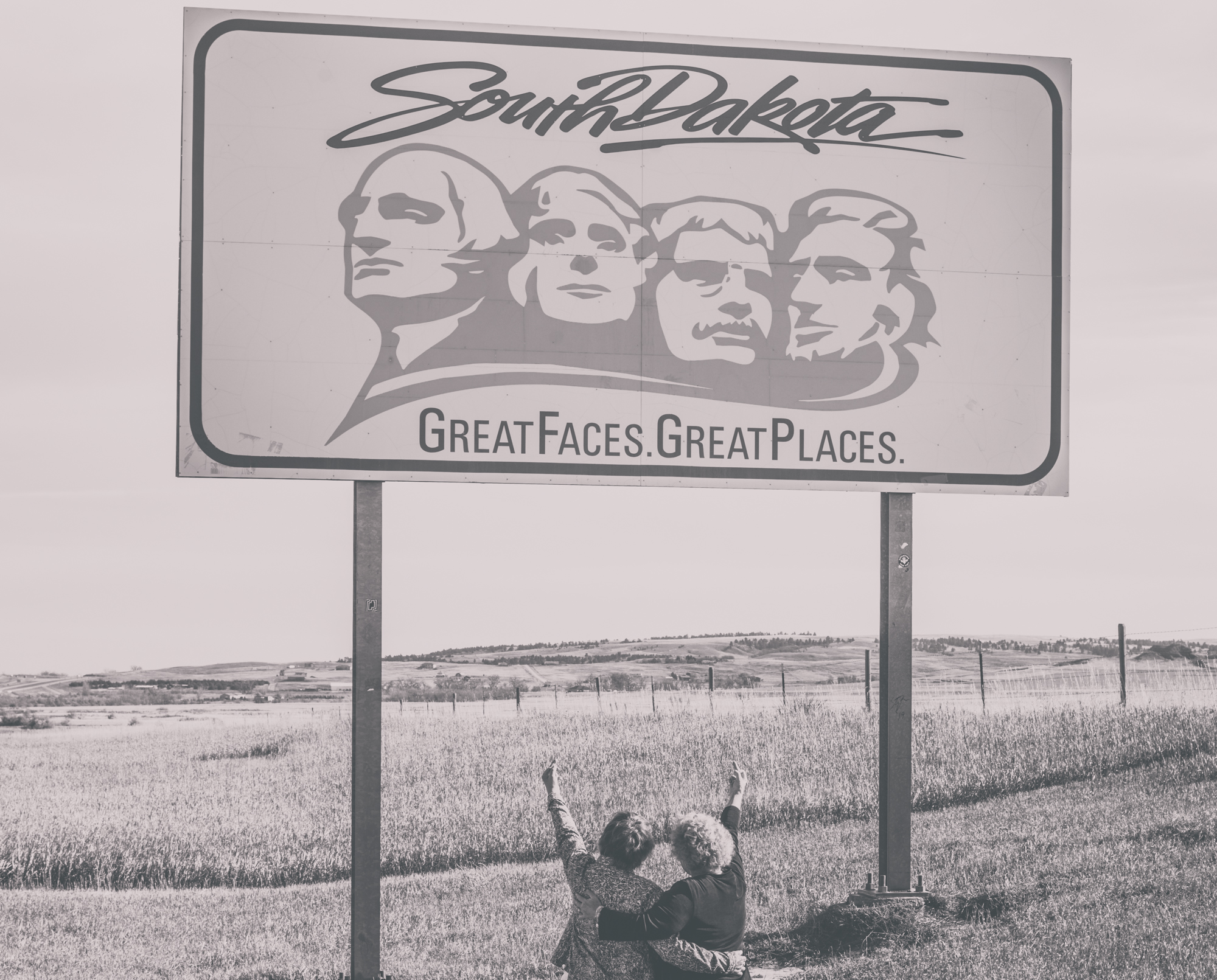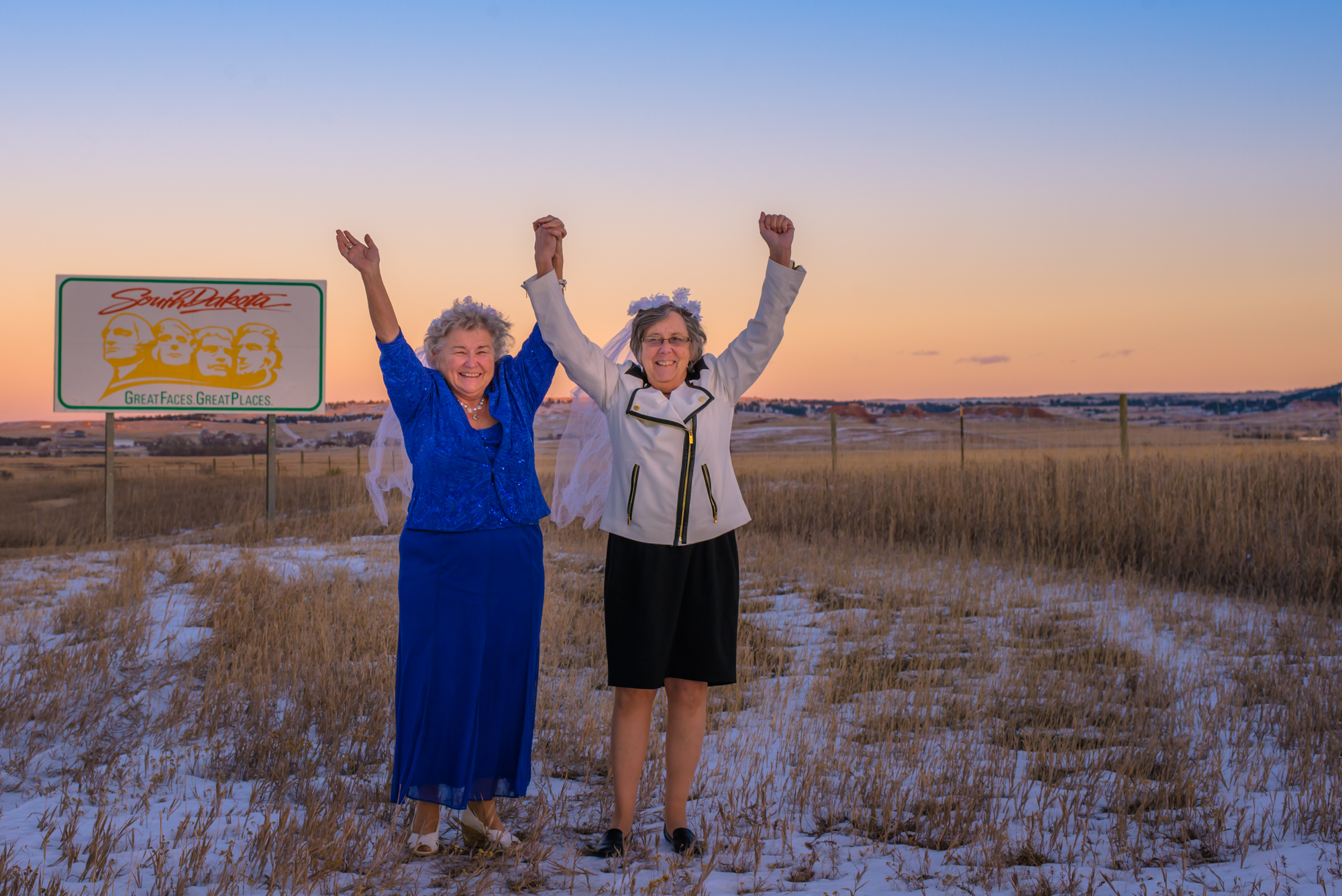In 2014 I was asked by the Black Hills Center for Equality to create a series of images depicting local people in the LGBTQ+ community and their stories.
A local professor and author, Lesleigh Owen, wrote the narratives.
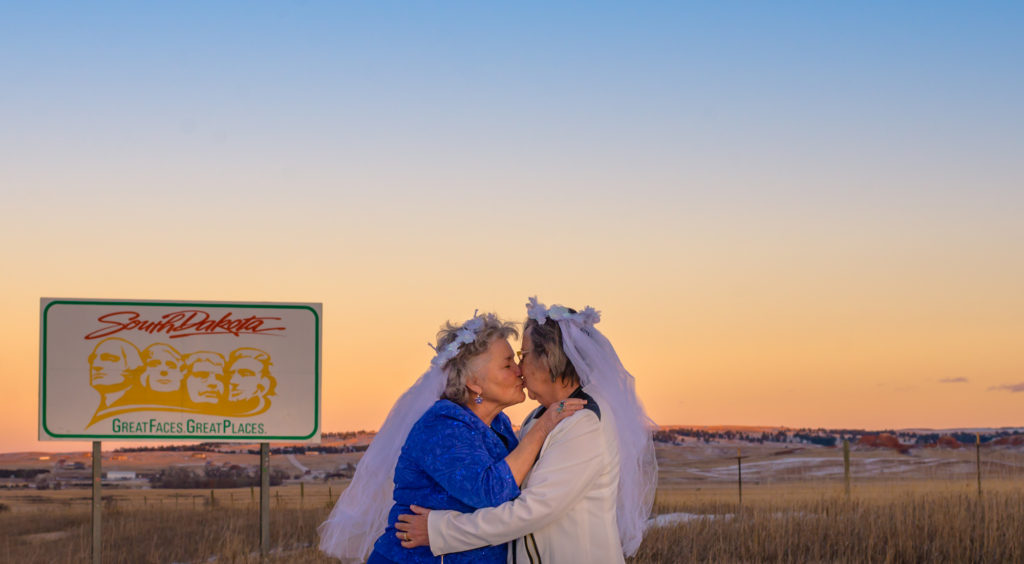 “You and I did this. You and I got this started.”
“You and I did this. You and I got this started.”
Nancy to wife, Jennie
On January 12, 2015, Federal Judge Karen Schreier struck down South Dakota’s ban on marriage equality, thanks in large part to the efforts of twelve intrepid plaintiffs. In 2014, Nancy, Jennie, and five other couples filed a lawsuit with South Dakota to recognize same-sex marriages performed in South Dakota and other states.
These pictures represent Jennie and Nancy’s fight to bring marriage equality to South Dakota. In the first few, they demonstrate their anger and frustration with a state that considers their marriage invalid, their human rights dismissible. The last few, taken after the January 12 ruling, shows their pride, their jubilation, at this hard-won victory.
Judge Schreier’s ruling will not be put into effect in the immediate future. Also on January 12, South Dakota Attorney General Marty Jackley filed an appeal to the 8th U.S. Circuit Court of Appeals. The fight for marriage equality isn’t yet over. But thanks to Nancy, Jennie, and ten other litigants, we have already come so far.
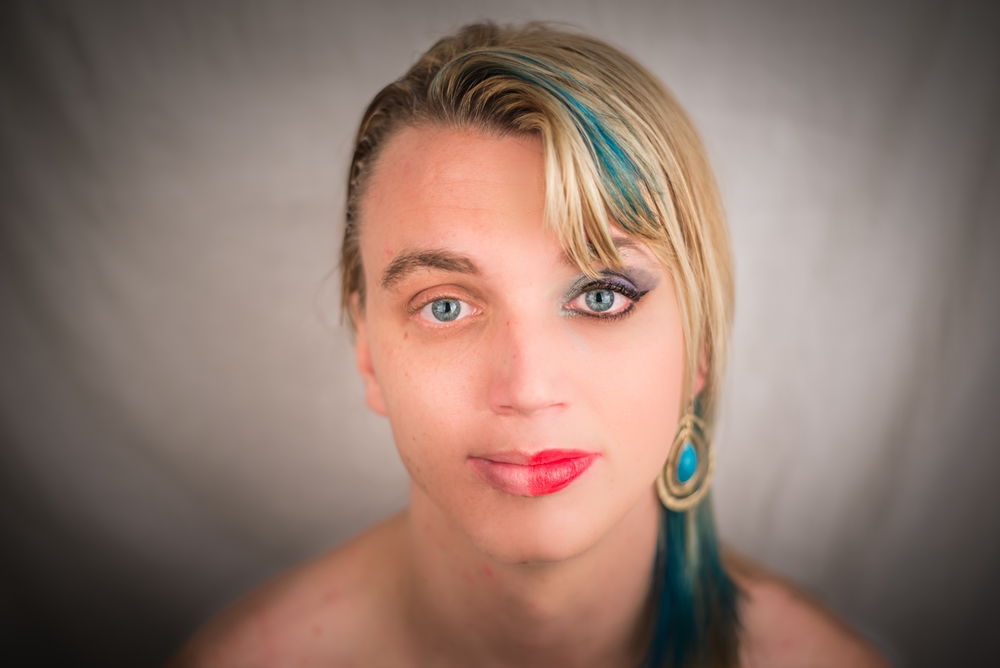 “I’m starting to get more and more comfortable with a body that finally matches my soul.”
“I’m starting to get more and more comfortable with a body that finally matches my soul.”
Cori
In the picture, Cori is split in half. On our left, we witness how others in her past might have seen her, while the right half speaks to how we see her now. The truth is, she has never been half. Cori grew from a young girl to a mature, happy, self-realized young woman. The only thing that has changed is her appearance; it finally matches who she is, who she has always been.
The picture we see on the right is the correct one. It is the reality of Cori’s identity, the manifestation of her soul.
 “It doesn’t matter who’s in bed together.”
“It doesn’t matter who’s in bed together.”
Gregg
They could be almost anyone’s feet. The blurry faces six feet away could be almost anyone’s faces. This picture focuses on a single intimate moment, a point of connection that could belong anywhere, in any bedroom. It’s a snapshot of comfort, commitment, and contentment.
But they’re not anyone’s feet. They belong to Josh and Gregg, a loving couple that has been together for eight-and-a-half years. They live the American Dream: college degrees, a beautiful home, three cats, a dog, and three bearded dragons. They even have a brown picket fence.
They could be any committed, middle-class couple. They are Gregg and Josh: young, successful, happy, and gay in South Dakota.
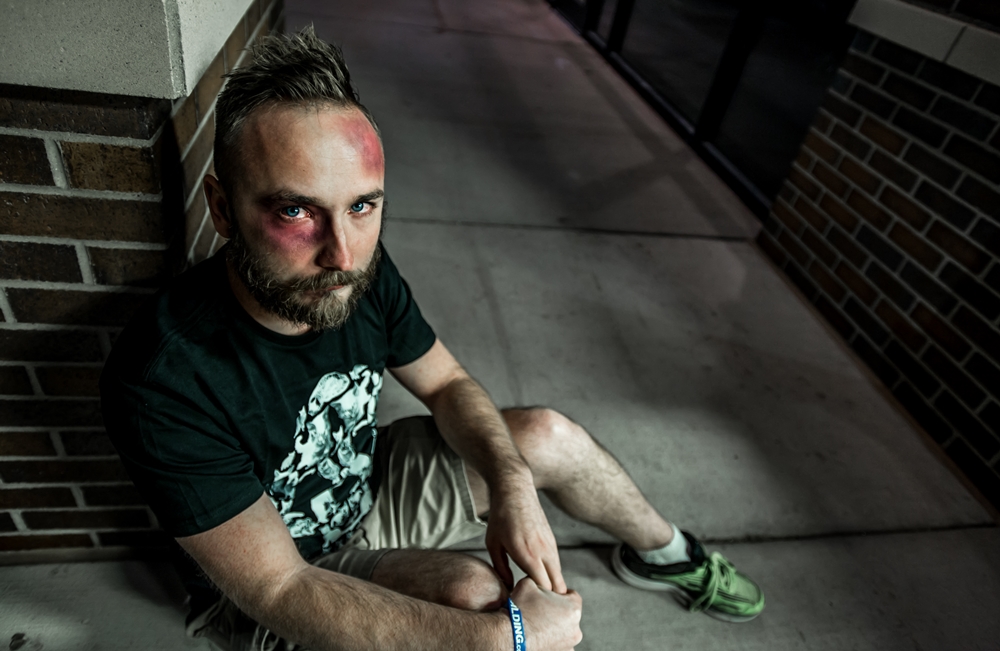 “It’s a constant fear we go through.”
“It’s a constant fear we go through.”
Joe
Joe grew up three hours away from where Aaron McKinney and Russell Henderson tortured and murdered Matthew Shepard. Since coming out as gay at the age of 15, Joe has never been bashed. Like most LGBTQ persons, though, he has experienced derision, harassment, and discrimination. He’s lost two jobs because of his sexuality.
This picture represents the fear and the reality of queer persons in South Dakota. It is 2015, but the threat of violence still looms, keeping some LGBTQ persons closeted, some fearfully out. But this picture also represents hope and strength. Joe, a photographer himself, chose to look defiant in this picture. “This is a fear we have,” he said, “but it’s not going to stop us from living our lives.”
 “My expression looks bitter and satisfied.”
“My expression looks bitter and satisfied.”
David
His priest was one of the first people to whom David came out. David was sixteen years old at the time, a student and churchgoer. He chose to talk with his priest before his parents because he needed to know the church’s stance on his sexual identity.
Being gay is not acceptable, David’s priest told him. David could not call himself gay, could not think gay thoughts, could not act on any of his desires. If he remained affiliated with the Catholic church, he would have to renounce his homosexuality.
David left the church. Forced to carve out his own definitions and understandings, David now identifies as a homo-romantic, asexual Atheist. He is satisfied with his path and the strength of character it took to navigate it but feels angry over how many people have experienced this kind of pain and rejection.
NOTE FROM PHOTOGRAPHER: This was probably my favorite shoot of this series so far; we rented a costume from the local community theatre and snuck onto the church steps to snap some photos. Perhaps because religion has played such a detrimental role in the lives of so many people I know and love, or perhaps because during my Catholic school days I endured countless hours of Mass inside that very church…either way this shoot had a particularly personal meaning for me.
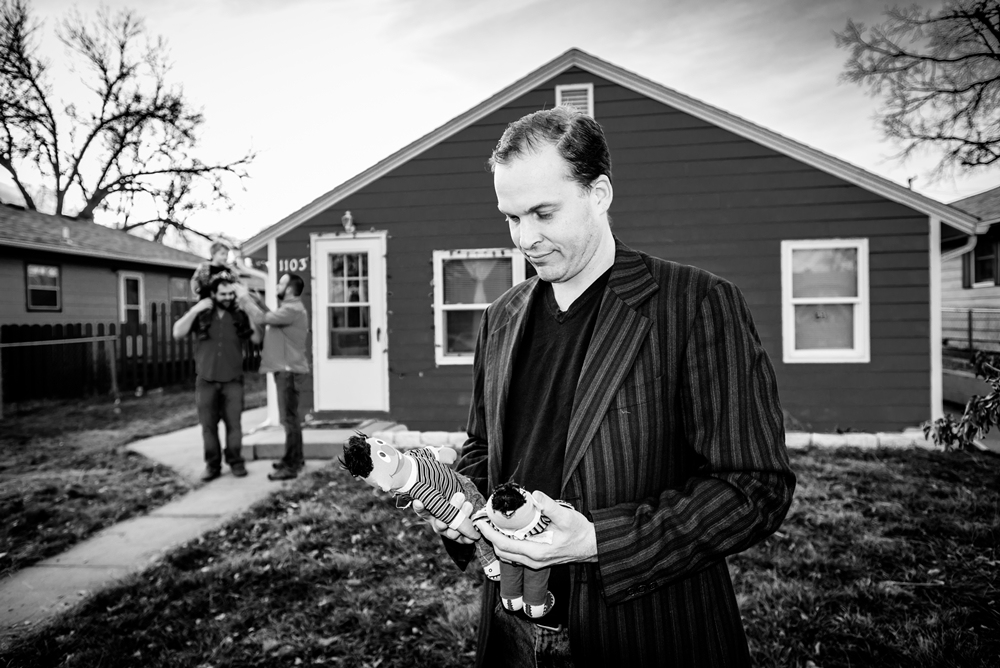 “My dad and George pretended they slept in different beds for years, like Bert and Ernie.”
“My dad and George pretended they slept in different beds for years, like Bert and Ernie.”
David
David grew up with two dads. Although his dads have been together for over 30 years, personal and social pressures kept them closeted for far-too-many of them. In spite of their necessary pretense, they lavished affection and life lessons on David, their son by blood and circumstance. “They taught me to stand up when a lady leaves the table. You’d be amazed at how much gay dads can teach you about impressing women!” David says.
Now a father himself, David reflects on the meaning of family. Some families may not be recognized by law, may not be allowed the right to marry or adopt, may look nothing like the families we see on television. Even when the laws have yet to catch up with it, the fact remains, families start and end with love.
Just ask David, his wife and son, and his two dads.
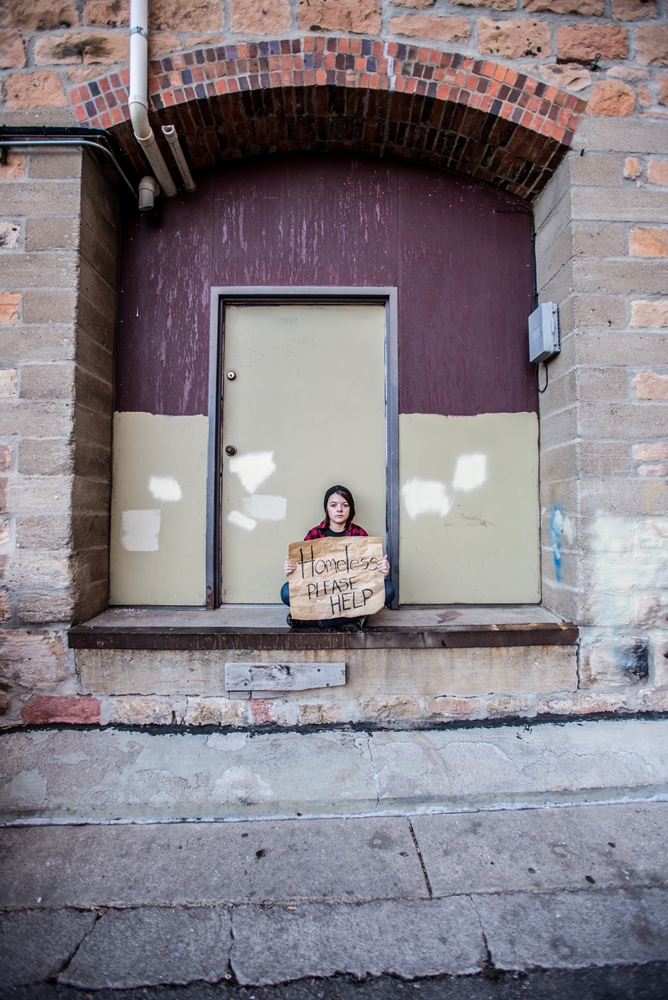
Homeless LGBTQ Youth
Around 40% of homeless youth are lesbian, gay, bisexual, transgender, and/or queer.
Two-thirds of homeless, LGBTQ youth cite family rejection as a cause of their homelessness, while over half cite family abuse.
Non-white and transgender, queer youth are especially at risk of homelessness; 65% of homeless persons are people of color, and one in five transgender persons will experience homelessness in their lifetime.
Why does this matter? Because homeless, LGBTQ youth are at higher risk of depression, suicide, HIV infection, and substance abuse. Because, even compared to their straight and cisgender counterparts, these youth disproportionately experience hunger, sexual abuse, and exploitation.
Because queer youth should never have to suffer because of others’ bigotry.

